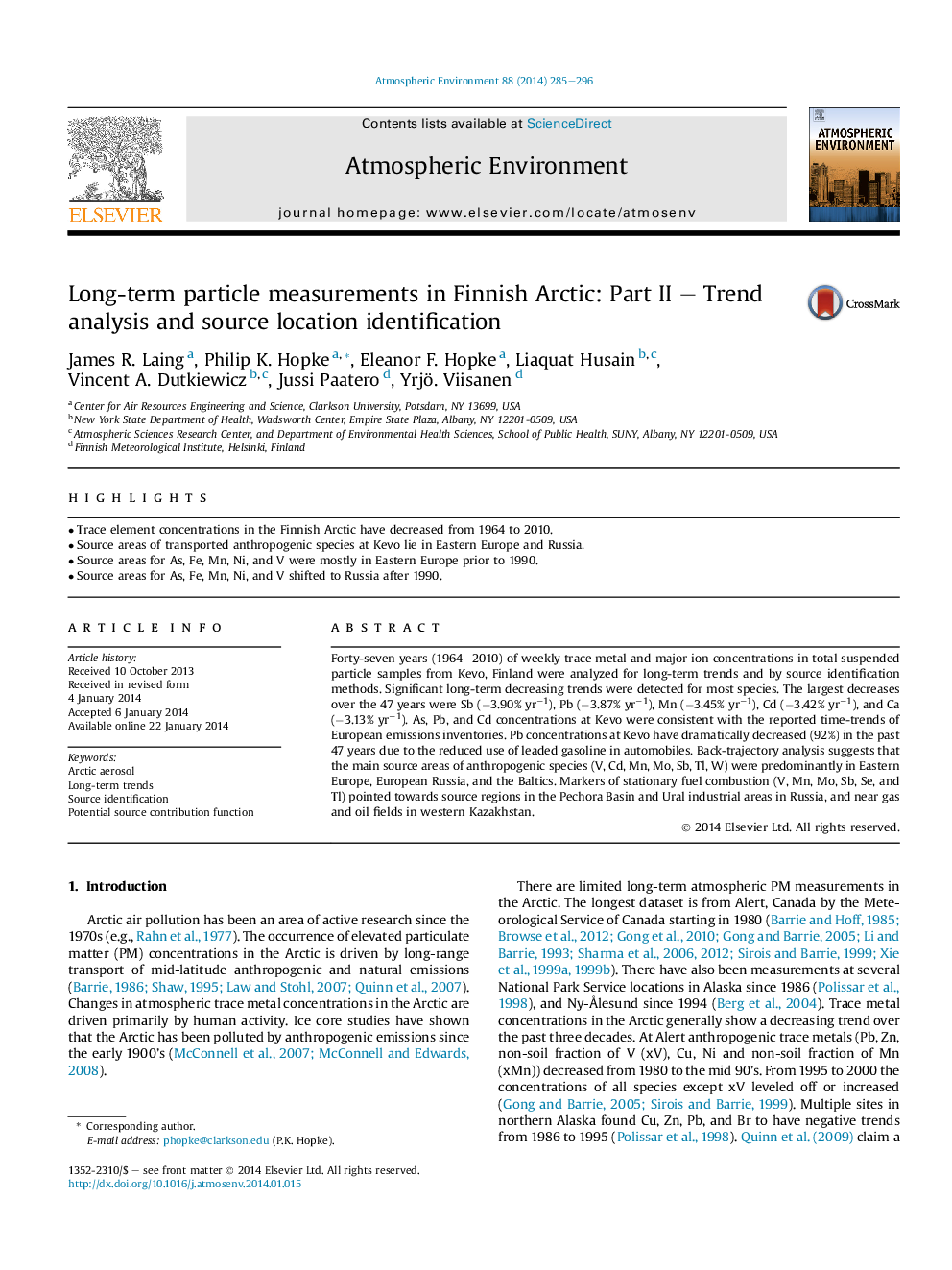| Article ID | Journal | Published Year | Pages | File Type |
|---|---|---|---|---|
| 6340891 | Atmospheric Environment | 2014 | 12 Pages |
Abstract
Forty-seven years (1964-2010) of weekly trace metal and major ion concentrations in total suspended particle samples from Kevo, Finland were analyzed for long-term trends and by source identification methods. Significant long-term decreasing trends were detected for most species. The largest decreases over the 47 years were Sb (â3.90%Â yrâ1), Pb (â3.87%Â yrâ1), Mn (â3.45%Â yrâ1), Cd (â3.42%Â yrâ1), and Ca (â3.13%Â yrâ1). As, Pb, and Cd concentrations at Kevo were consistent with the reported time-trends of European emissions inventories. Pb concentrations at Kevo have dramatically decreased (92%) in the past 47 years due to the reduced use of leaded gasoline in automobiles. Back-trajectory analysis suggests that the main source areas of anthropogenic species (V, Cd, Mn, Mo, Sb, Tl, W) were predominantly in Eastern Europe, European Russia, and the Baltics. Markers of stationary fuel combustion (V, Mn, Mo, Sb, Se, and Tl) pointed towards source regions in the Pechora Basin and Ural industrial areas in Russia, and near gas and oil fields in western Kazakhstan.
Related Topics
Physical Sciences and Engineering
Earth and Planetary Sciences
Atmospheric Science
Authors
James R. Laing, Philip K. Hopke, Eleanor F. Hopke, Liaquat Husain, Vincent A. Dutkiewicz, Jussi Paatero, Yrjö. Viisanen,
